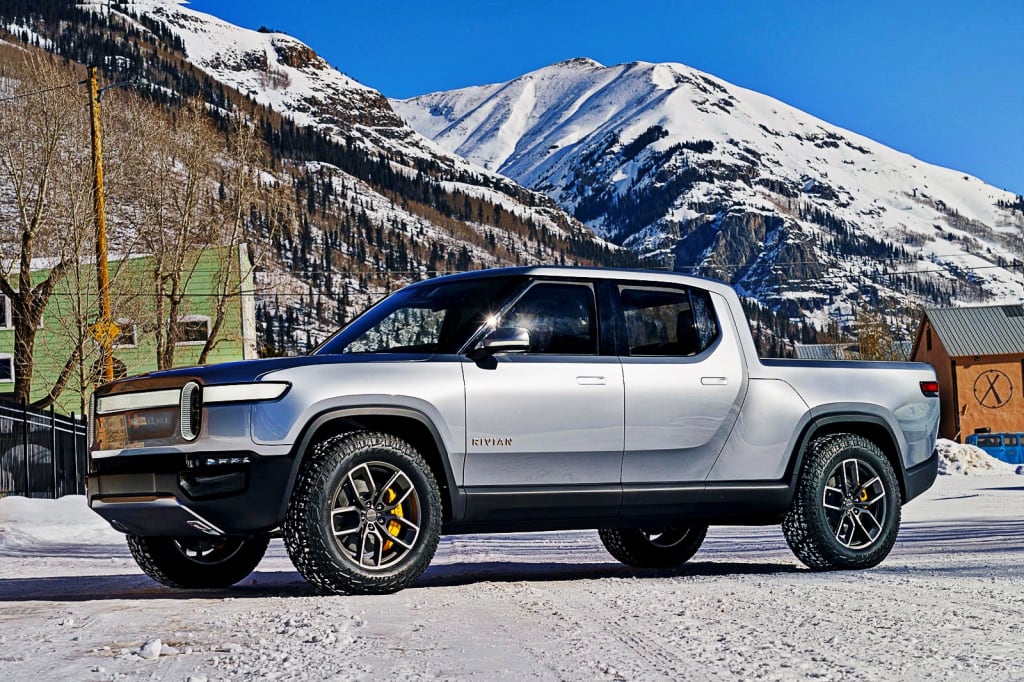Electrification in Rural America
Will Rural America Switch from Using Gas to Electric Trucks?

The pickup truck is king on the countryside roads. In rural areas, most people drive trucks running on diesel and gasoline. Pickups are considered one of the best-selling vehicles in the United States. However, automakers are ditching fuel and releasing electric versions of pickup trucks. Also, buying electric vehicles (EVs) has been gaining momentum.
But with the electrification of the auto industry and the imminent ban of brand-new fuel-powered vehicles in 2040, will people in the rural areas switch to electric trucks?
Top choice for the rural setting
According to the recent statistics by Statista.com, people in the rural areas in the United States were approximately 57 million, while people in the urban areas were early 273 million in 2020. Cities and urban centers make up only a tiny land percentage of the country. However, they are all densely populated and home to more than 80 percent of the population in the U.S.
Ninety-seven percent of the country's landmass is rural. For many, hearing the term "rural" suggests images of the countryside, pastoral landscapes, and farmlands, but it may have different meanings to different people. For census, urban and rural are defined using specific population density, distance, thresholds, and land use criteria.
But despite the larger land area, a significantly lesser rate of people is living there. Urban areas are currently experiencing problems with the scarcity of living spaces and higher cost of housing, while rural places have low housing density.
When it comes to a preferred automobile, Americans in rural areas usually drive pickup trucks. Due to the utility and capability of full-size pickup trucks, they are much favored by farmers and other industries in the countryside.
Small cars are only helpful for transporting people, but larger-sized pickup trucks are useful for many things. Aside from towing and payload capabilities, the truck parts are sturdier and bigger—recommended for jobs that require hauling heavy objects or towing trailers.
Do driving farmers want an electric truck?
The Philadelphian media company, Farm Journal, Inc., had posted a poll on May 2021 on their website AgWeb.com. They asked people if they would be interested in an electric truck.
According to the results, 58 percent of their readers are not interested, while only 10 percent would like one (specifically Ford F-150 Lightning). Furthermore, 25 percent of the respondents said they would consider an electric pickup truck.
Those who aren't interested think that an electric pickup cannot handle what they have to do on their ranch. For some who live in high-altitude cold areas, the uncertainty is high. Battery-powered trucks will consume more electricity which may be reserved for the household.
Instead of charging up the electric truck's battery, people could use the electricity for heat, lights, and other things that might need the power to endure the cold and snowy weather. Since not enough recharge stations are available, they don't want to run out of battery in the middle of the trip and get stranded in the cold.
Using biofuel as an alternative
The House Agriculture Committee held a hearing with Congress to discuss the implications of current investment and EV adoption on agriculture and rural communities.
The president of the Renewable Fuels Association, Geoff Cooper, pointed out that even if automakers make more electric vehicles, it will take decades to turn over the fleet. Cooper also called on the legislators to ensure that the future carbonization policies must be technology-neutral and performance-based. He also mentioned that Congress should encourage increased fuel efficiency without dictating what type of automobile be used to accomplish their goals.
Cooper talked about the more significant greenhouse gas (GHG) reductions coming to the corn ethanol sector using the steadfast development of new technologies and more efficient practices. Compared to gasoline, the present corn ethanol reduces GHG emissions by roughly half. According to the Argonne National Laboratory of the Department of Energy, the usual corn ethanol provides a 44-52 percent greenhouse gas savings.
If people in the rural parts of America continue using their fuel-powered vehicles, the roads might resemble Cuba in twenty years. Even when dealers offer EVs entirely, older pickups and trucks with dually wheels running on gas and diesel engines will still be kept in circulation. Many discontinued automobiles with internal combustion engines will persist on the rural roads, especially where charging stations may be lacking.
Hurdles faced in EV shift
A study from the University of California on the preparation of rural America for the EV revolution has pointed out three critical challenges to the adoption and robust EV deployment across rural America:
- Cost, design limitations, and range of vehicles: Electric pickup trucks are highly desirable to some rural Americans, but the choices are limited for now compared to the available variants on fuel-powered ones. EVs are more expensive than combustion-engine vehicles depending on the model type, features, and battery range. Moreover, the limited electric range in rural communities may not be practical, unlike what we see in an urban setting with many dedicated charging stations.
- High capital cost in remote areas for charging infrastructure: Charging stations for electric vehicles are costly to install and maintain, so the willingness to invest in infrastructure is lower in rural areas. Moreover, the remoteness of some rural regions and the low population density makes it more challenging to find optimal locations for public charging infrastructure.
- EV market uncertainty: Federal tax incentives do not apply to all new electric vehicle variants, so people are having doubts about switching to EVs. The potential rollback from tax incentives also hinders the investments and innovation of EVs. Market uncertainties disincentivize the manufacturers to invest in high-capacity, lightweight, and long-range batteries. It also has a cascading effect on the investments in charging station infrastructure.
Since technology and environmental concerns have increased worldwide, automakers invest in the required infrastructure to sustain and create electric vehicles
Opinions vary when it comes to switching to an all-electric vehicle. Some people are interested in transitioning to electric cars due to the fuel cost spike. In contrast, others would still prefer driving with gas because brand-new electric vehicles are so expensive.
The government, private sector, and cooperative stakeholders must do proactive planning to create a more vital deployment and adoption of EVs across rural communities between regional and local transportation agencies. It will also ensure a connected network with higher utilization for the onset and evolution of electric-powered vehicles.
Willingness to ditch combustion engines
Many food sources come from the rural regions, and farmers can't just haul hay bales with an SUV, a hatchback, or other passenger cars. It is challenging to separate farmers from their trucks because they need a versatile vehicle to withstand the job. In rural locations, it's not only them who use pickup trucks for their means of transportation—fisherfolks, plumbers, electricians, and other vocations also live in the countryside.
The United States Federal Government has set a goal to make half of all the new vehicles sold as zero emissions in 2030. They also plan to build an equitable network of 500,000 chargers to help make EVs accessible to all Americans for local and long-distance trips.
Residents in the rural regions spend more on fuel and vehicle maintenance than their urban counterparts as they drive more distance. If they would accept the unconventional adoption of EVs, people in rural zones can reduce their fuel expenses and lessen the environmental impact of transportation in their communities. However, their transition may not be as easy as the people in the capital and urban cities quickly accepted the shift to electric vehicles.
About the Creator
Jen Demkin
Hi, I'm Jen from 4WheelOnline. My fascination with vehicles started in my childhood. I like cars more than dolls. I enjoy writing about automotive industry news, vehicle maintenance tips, and more.






Comments
There are no comments for this story
Be the first to respond and start the conversation.